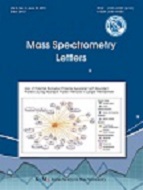
- P-ISSN 2233-4203
- E-ISSN 2093-8950


We developed a bioanalytical method for simultaneous determination of nine NBOMe derivatives (25H-NBOMe, 25B-NBOMe, 25E-NBOMe, 25N-NBOMe, 25C-NBOH, 25I-NBOH, 25B-NBF, 25C-NBF, and 25I-NBF) in human plasma using liquid chromatography tandem mass spectrometry (LC-MS/MS). Human plasma samples were pre-treated using solid-phase extraction. Sepa-ration was achieved on a C18 column under gradient elution using a mobile phase containing 0.1% formic acid in acetonitrile and 0.1% formic acid in water at a flow rate of 0.3 mL/min. Mass detection was performed in the positive ion mode using multiple reaction moni-toring. The calibration range was 1-100ng/mL for all quantitative analytes, with a correlation coefficient greater than 0.99. The intra- and inter-day precision and accuracy varied from 0.85 to 6.92% and from 90.19 to 108.69%, respectively. The recovery ranged from 86.36 to 118.52%, and the matrix effects ranged from 27.09 to 99.72%. The stability was acceptable in various conditions. The LC-MS/MS method was validated for linearity, accuracy, precision, matrix effects, recovery and stability in accordance with the FDA guidance. The proposed method is suitable for reliable and robust routine screening and analysis of nine NBOMe derivatives in forensic field.
Corazza, O. (2013). . Int. J. Drug Policy, 24, 82-.
Deluca, P. (2012). . Prog. Neuropsychopharmacol. Biol. Psychiatry, 39, 221-.
United Nations Office on Drugs and Crime (UNODC). World Drug Report 2017. http://www.unodc.org/wdr2017/field/Booklet_4_ATSNPS.pdf.
Zhang, L. (2014). . J. Chromatogr. B, 955, 10-.
Berman, S. (2008). . Ann. N. Y. Acad. Sc, 1141, 195-.
Suzuki, J. (2015). . Psychosomatics, 56, 129-.
Hansen M. (2014). . ACS Chem. Neurosci, 5, 243-.
Johnson, R. D. (2014). . J. Anal. Toxicol, 38, 479-.
Poklis, J. L. (2014). . J. Anal Toxicol, 38, 113-.
da Cunha, K. F. (2018). . Forensic Toxicol, 36, 113-.
Food and Drug Administration (FDA). Guidance for industry on bioanalytical method validation 2013. https://www.fda.gov/downloads/drugs/guidances/ucm368107.pdf.
Notari, S. (2006). . J. Chromatogr. B, 831, 258-.
Jung, B. H. (2007). . Biomed. Chromatogr, 21, 1095-.
Bansal, S. (2007). . AAPS J, 9, E109-.
Dadgar, D. (1995). . J. Pharm. Biomed. Anal, 14, 23-.
Chambers, E. (2007). . J. Chromatogr. B, 852, 22-.
Pichini, S. (2004). . Anal. Chem, 76, 2124-.